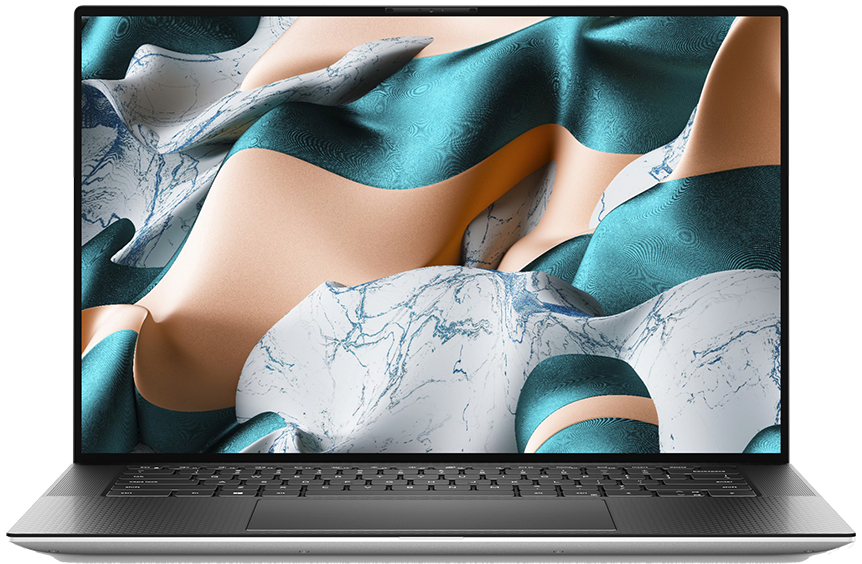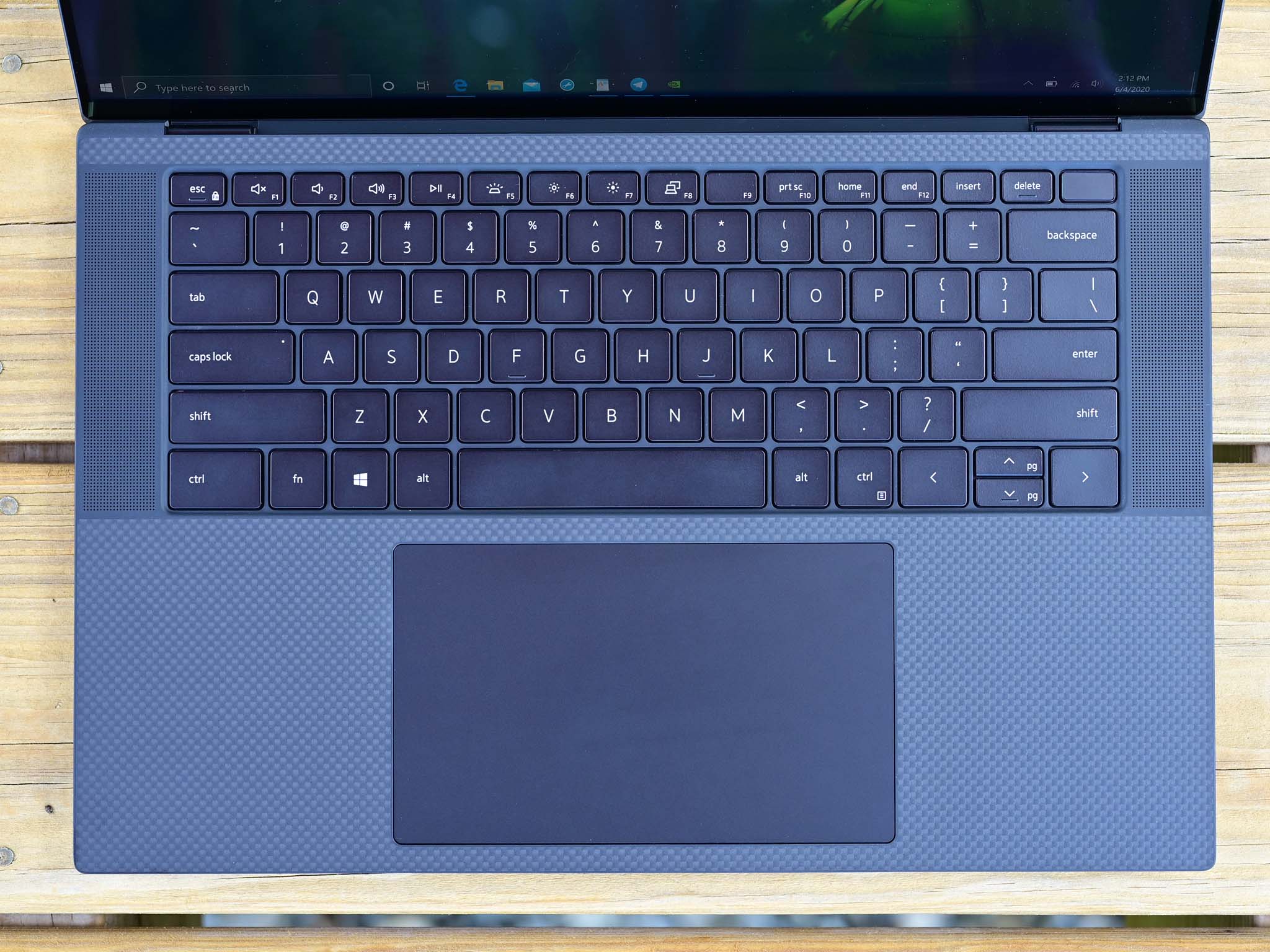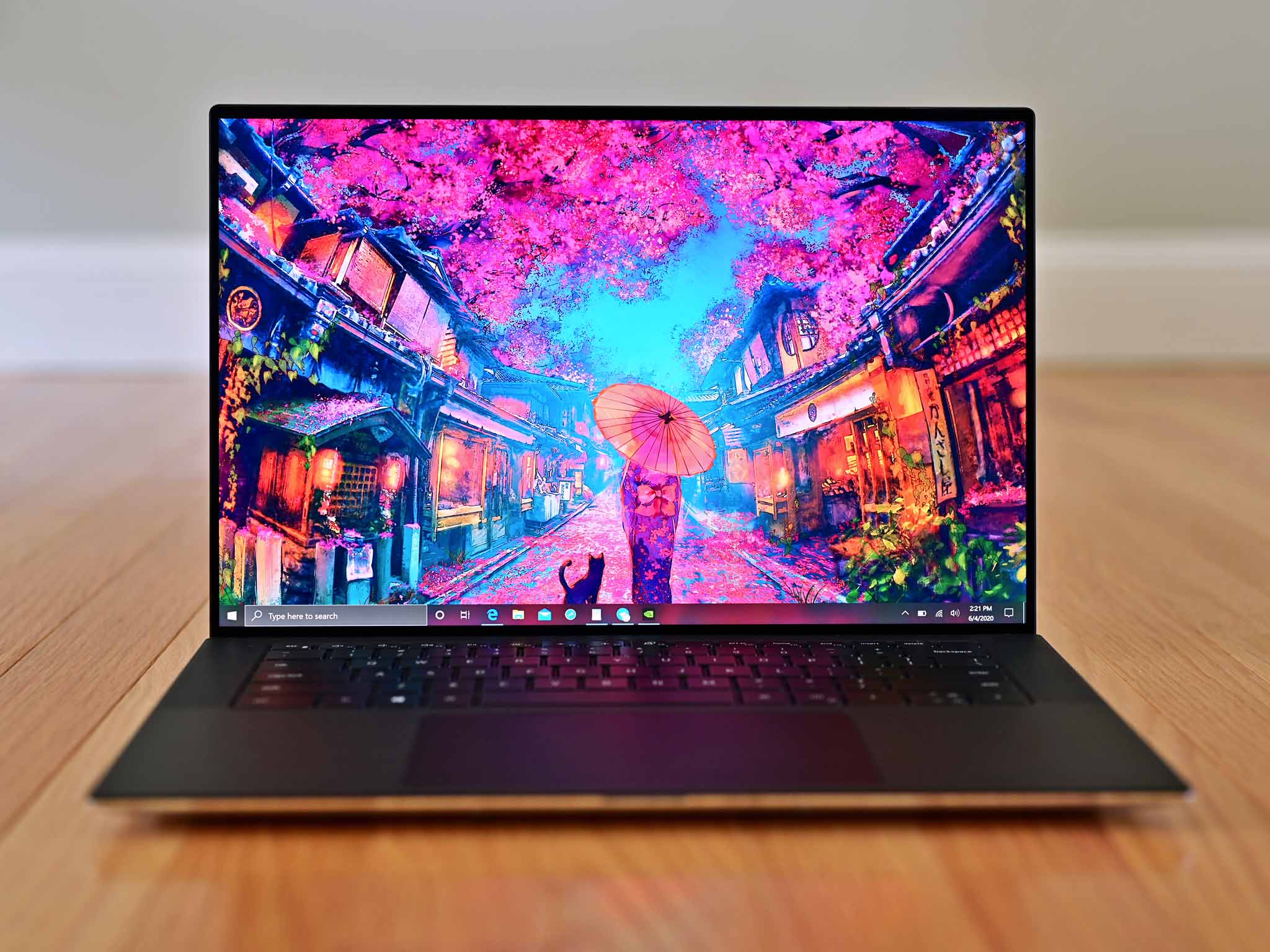Dedicated GPU, 4K Display
Dell XPS 15 (9500)
Pros
- Powerful 10th Gen Intel CPUs
- Dedicated NVIDIA GTX 1650 Ti GPU
- 4K touch display with 16:10 aspect ratio
- Enormous touchpad, comfy keyboard
- Premium build quality
Cons
- Not as portable as the gram
- Less battery life
The powerhouse Dell XPS 15 is the right choice for anyone who wants the most performance possible. Choose from plenty of configuration options, opt for up to a stunning 4K touch display, and enjoy a sleek, thin chassis.
Ultralight Ultrabook
LG gram 15Z90N
Pros
- Very thin and light
- Long battery life
- 10th Gen Intel Core CPUs
- Wi-Fi 6 and Bluetooth 5
- More varied port selection
Cons
- No discrete GPU
- CPUs not as powerful
- Relatively small touchpad
The LG gram 15 continues the trend of a magnesium alloy chassis weighing in at less than 2.5 pounds (1.12kg). 10th Gen Intel Core processors (CPU), considerable battery life, and very light chassis make it an attractive option for anyone on the move.
Dell XPS 15 (9500) vs. LG gram 15Z90N tech specs
| Dell XPS 15 (9500) | LG gram 15Z90N | |
|---|---|---|
| Processor | 10th Gen Intel Core i5-10300H Core i7-10750H Core i7-10875H |
10th Gen Intel Core i5-1035G7 Core i7-1065G7 |
| RAM | 8GB, 16GB, 32GB, 64GB DDR4-2933MHz |
8GB, 16GB DDR4-3200MHz |
| Storage | 256GB, 512GB, 1TB, 2TB M.2 PCIe SSD |
256GB, 512GB, 1TB M.2 PCIe SSD |
| Display size | 15.6 inches | 15.6 inches |
| Display resolution | 1920x1200 (FHD+) 3840x2400 (UHD+) |
1920x1080 (FHD) |
| Aspect ratio | 16:10 | 16:9 |
| Graphics | Intel UHD Graphics NVIDIA GTX 1650 Ti (4GB) |
Intel UHD Graphics Intel Iris Plus Graphics |
| Ports | Two Thunderbolt 3 USB-C 3.1 SD card reader 3.5mm audio |
Thunderbolt 3 Three USB-A 3.1 HDMI microSD card reader 3.5mm audio |
| Biometrics | IR camera Fingerprint reader |
Fingerprint reader |
| Wireless | Killer Wi-Fi 6 AX1650 Bluetooth 5.0 |
Intel Wi-Fi 6 AX201 Bluetooth 5.0 |
| Battery | 56Wh, 86Wh | 80Wh |
| Dimensions | 13.57 x 9.06 x 0.71 inches (344.72mm x 230.14mm x 18mm) |
14.1 x 8.9 x 0.7 inches (358.14mm x 226mm x 17.78mm) |
| Weight | Non-touch, 56Wh: 4.03 pounds (1.83kg) Touch, 86Wh: 4.5 pounds (2.05kg) |
2.5 pounds (1.12kg) |
Design and features
The two 15-inch laptops share a similar footprint, and they're both about the same thickness. The XPS 15, however, is considerably heavier. The LG gram lives up to its name, weighing in at just 2.5 pounds (1.12kg). The non-touch XPS 15 with a smaller battery hits 4.03 pounds (1.83kg), while the touch models with a larger battery hit 4.5 pounds (2.05kg). If you want the most portable option to carry on frequent travels, the gram 15 should win you over.
Part of the gram's secret to weight loss is a magnesium alloy chassis, whereas the XPS 15 goes with CNC machined aluminum and a carbon fiber palm rest. Both laptops have a premium look with attractive lines, and you're not going to feel out of place in a cafe or boardroom with either option. Ports have been stripped back on the refreshed XPS 15 (9500) compared to older models. It has two Thunderbolt 3, one USB-C, and SD card reader, and a 3.5mm jack. The gram 15 has a much more varied selection, with Thunderbolt 3, three USB-A, HDMI, microSD card reader, and 3.5mm audio jack. If you need to expand XPS connectivity, you can always check out a powerful docking station.
Speedy Wi-Fi 6 connectivity comes standard in both laptops, setting you up for future networking. Both have an available fingerprint reader for increased security through Windows Hello, though only the XPS 15 also has the option for facial recognition through an IR camera. Despite the incredibly thin display bezel, the camera is still positioned above the screen.
Laptops this size are built for productivity, so the keyboard and touchpad play a significant role. If you're a lover of number pads, only the gram 15 includes the extra keys. Both keyboards are backlit and shouldn't take long to get used to. We always recommend testing in person, but if you can't, just keep in mind that there's nothing wrong with either setup.
As for the touchpad, the XPS 15 is clearly the winner in the size category. Dell has not held anything back here, and it dwarfs the touchpad on the gram 15. Both laptops use Precision drivers. Flanking the XPS 15's keyboard on either side is a quad-speaker setup that pumps out impressive top-firing audio. It's a clear win compared to the dual down-firing speakers in the gram 15.
Display
Display options are where the differences between these two laptops begin to open up. The gram 15 has a single touch FHD IPS option available, with high sRGB color reproduction and excellent contrast. It's ideal for productivity work, and the lower resolution helps boost the battery life. If you'd like to up things to 4K, however, you'll have to turn to the XPS 15.
Dell's laptop has two different displays to choose from, each with a new 16:10 aspect ratio that effectively eliminates the chin at the bottom of the screen. Baseline models come with an FHD+ non-touch display with perfect sRGB color reproduction and about 500 nits brightness. It has an anti-glare finish to help with working in bright sunlight, but it does not have the attractive edge-to-edge glass that some people prefer. With the FHD+ model, there is a slim plastic bezel that is raised.
Moving up to 4K, the touch display has 100% AdobeRGB and 94% DCI-P3 color reproduction and manages about 500 nits brightness. Its anti-reflective layer cuts down significantly on glare while also delivering the glass finish with no raised bezel. Both displays offer Dolby Vision, though only the 4K model comes with VESA certified DisplayHDR 400.
Performance
Thanks to 10th Gen Intel Core "Ice Lake" CPUs and integrated Intel Iris Plus graphics, the LG gram 15 will hold its own when given a considerable load. It won't bring the power of dedicated graphics and Intel's H-series CPUs, but it's going to perform well with standard office and productivity work. It also has two M.2 SSD slots, allowing you to add or upgrade storage after purchase.
The XPS 15 is what you'll want if performance truly matters. 10th Gen Intel Core H-series CPU options shred and the NVIDIA GTX 1650 Ti dedicated GPU offers relatively impressive power for specialized work and a bit of gaming (though this shouldn't be considered a gaming laptop). Due to there being so many customization options, it's much easier to get precisely the laptop you need from Dell.
The LG gram 17 that we reviewed, which has the same 80Wh battery as the gram 15, is capable of hitting about 10 hours of life when going about standard productivity work. That should hold true here as well. On the other hand, the XPS 15 is a mixed bag. There are two battery sizes available, so those who want the best life possible should opt for the 86Wh option. However, the larger battery is only available with the Core i7 CPU and dedicated GPU, which will consume more power. The gram should deliver on average more battery life, though the XPS 15 shouldn't be far behind, at least when not taxing the system.
Go with the XPS 15 for the most power
Thanks to beefy CPUs and dedicated NVIDIA GPU, the XPS 15 is the right choice for power-hungry users. Add in plenty of customization options, including a 4K touch display, and you should find it easy to get exactly what you want.
Dedicated GPU, 4K Display
Dell XPS 15 (9500)
King of 15-inch laptops
The refreshed XPS 15 (9500) brings 10th Gen Intel CPUs, a faster GPU, and an option for 4K touch display with a 16:10 aspect ratio.
Stick with LG's gram 15 for a mobile and capable Ultrabook
You won't get as much power from the LG gram 15Z90N, but it's still one of the lightest 15-inch laptops around. If you like to travel unburdened, this laptop should be an excellent fit for productivity work and even some light gaming.
Ultralight with 10th Gen Intel CPUs
LG gram 15Z90N
Worthwhile changes for 2020
Thanks to 10th Gen Intel CPUs, long battery life, and an incredibly light build, the gram 15 is a tremendous all-around Ultrabook for those who want to keep off the weight.













0 comments:
Post a Comment